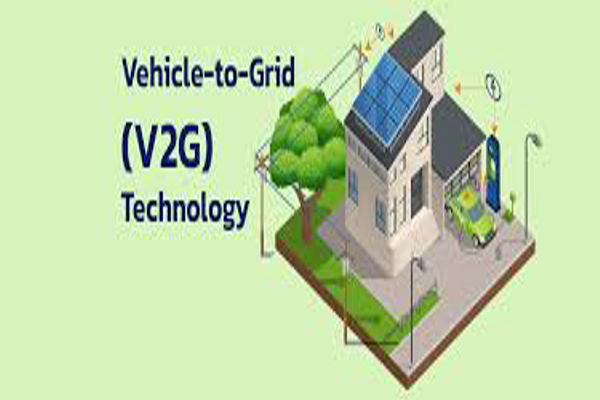With the rising global awareness of environmental protection and sustainability, electric vehicles (EVs) have emerged not just as a cleaner mode of transportation but also as efficient energy managers. Vehicle-to-grid (V2G) technology offers much more than that. It dynamically interacts with the power grid while saving energy, playing a dual role. This duality allows EVs to store excess energy in the power grid and supply it back to the system when required, enabling grid efficiency and stability.
What is V2G technology?
V2G technology enables bidirectional electricity transfer, including from the electric vehicle to the power grid. This allows the off-board energy supplier to manage the EV’s energy capabilities any time the car is plugged into the charging portal, either drawing power off the grid to charge the battery, or discharging the stored energy to the grid.
Smart charging systems make all of this possible, they monitor the grid market demands, electricity rates, as well as optimized charging and discharging cycles for the battery (a bidirectional approach). V2G technologies require sophisticated machinery such as bidirectional chargers and a means to each compliance with communication protocols that will maintain a secure two-way link between the electric vehicle and grid operations. Compliance with the ISO 15118 standard is crucial to establish secure and efficient communication channels.
Benefits of V2G Integration
- Grid Stability and Load Balancing
The Vehicle to grid technology provides a significant measure by enhancing the grid stability while using stored energy during times of peak demand, for example, in summer, or during peak demand hours, such as the evening. EVs relieve the strain on the grid by supplying energy at peak hours, eliminating blackouts, and further reducing the reliance on excess power plants. Through load balancing and the flattening of the V2G demand curve, this transaction can lessen the awareness of backup generators and renewable energy storage, allowing for a large integration of renewable energy sources.
- Economic Incentives For EV Owners
Along with the technological benefits, the Vehicle to grid technology also provides tangible economic opportunities to EV owners. The V2G technology opens new avenues for users to monetize their stored battery energy, providing advantages, adding to saved costs, and reducing maintenance. This technology allows the storage of surplus energy to the grid when electricity is in high demand. EVs can discharge the excess energy to the grid and compensate at a premium rate. As the expansion of V2G technology grows, financial models for EV owners will also mature and expand.
- Reduced Environmental Impact
On a broader scale, the Vehicle to grid technology contributes significantly to sustainable environmental conservation. It bridges the gap between transportation electrification and decarbonized power systems. When paired with V2G capabilities, the EVs provide added environmental benefits along with the lowered tailpipe emissions.
This technology acts as a distributed storage for renewable energy, by absorbing additional clean energy and storing it efficiently for future use, reducing the fossil fuel waste. This can be done by injecting energy closer to the point of consumption, enabling proper utilization of power and lower carbon intensity per unit of electricity consumed.
Mainstreaming the Global Market
Across the globe, electric vehicle technology is reimaging the market, driving sustainability, decarbonization goals, and enhancing grid flexibility. Integrating vehicle to grid technology in the EV systems is no longer a theoretical solution; it has gained traction in the real world to meet energy and mobility needs. Several countries across the globe are already contributing to establishing complete large-scale V2G integration, fueled by the advancing technologies and backed by industrial policy frameworks.
Countries like the Netherlands and the United Kingdom are leading the industry in integrating pilot V2G programs to electric vehicles into the urban power grids. Numerous projects like the UK’s ‘Electric Nation’ project and Amsterdam’s Smart Charging Initiative have led EVs to stabilize local grids, support renewable energy resources, and reduce overall upfront cost. Additionally, Asian countries like Japan, known for their early EV adoption, adopted the V2G technology to cope with disasters and conserve energy resources for emergencies.
In developing countries, immense opportunities await, as this technology expands EV deployment, hence reducing reliance on high combustible fuels like diesel, and improving rural electrification efforts.
Overall, the global shift towards energy conservation and the growing electrification of transport systems have fueled the adoption of V2G systems worldwide.
Conclusion:
Vehicle-to-Grid (V2G) technology is a significant advancement, fueling the adoption of electric transport systems. These systems function bidirectional, providing a flexible energy storage capability with the broader power grid. This duality is pivotal to stabilize energy supply, support renewables, and reduce reliance on fossil fuels. With the growing shift towards sustainability and attaining net-zero emissions, the V2G technology stands out as an efficient technology capable of balancing decentralized energy supply and demand. As the penetration of electric vehicles deepens and grid demands increase, the V2G technology is poised to become a cornerstone of smart cities, fueling future-ready energy frameworks.













